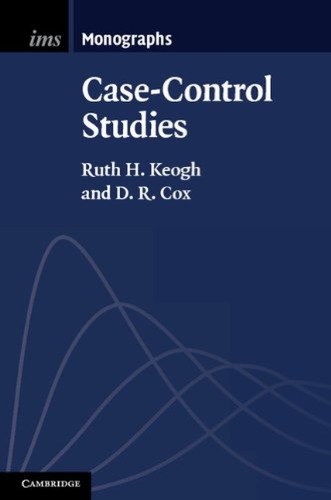

Most ebook files are in PDF format, so you can easily read them using various software such as Foxit Reader or directly on the Google Chrome browser.
Some ebook files are released by publishers in other formats such as .awz, .mobi, .epub, .fb2, etc. You may need to install specific software to read these formats on mobile/PC, such as Calibre.
Please read the tutorial at this link. https://ebooknice.com/page/post?id=faq
We offer FREE conversion to the popular formats you request; however, this may take some time. Therefore, right after payment, please email us, and we will try to provide the service as quickly as possible.
For some exceptional file formats or broken links (if any), please refrain from opening any disputes. Instead, email us first, and we will try to assist within a maximum of 6 hours.
EbookNice Team

Status:
Available0.0
0 reviews
ISBN 10: 1107019567
ISBN 13: 9781107019560
Author: Ruth H Keogh, David Roxbee Cox
Chapter 1: Introduction to Case-Control Studies
1.1 Defining a case-control study
1.2 Measuring association: the odds ratio
1.3 Methods for controlling confounding
1.4 Temporal aspects
1.5 Further details on the sampling of cases and controls
1.6 Bias in case-control studies
1.7 Use of case-control studies
Notes
Chapter 2: The Simplest Situation
2.1 Preliminaries
2.2 Measuring association
2.3 Statistical analysis
2.4 Model formulation
2.5 Design implications
2.6 Logistic dependence
2.7 Explanatory variables with more than two levels
2.8 Conditional odds ratios
2.9 A special feature of odds ratios
2.10 Introducing time
2.11 Causality and case-control studies
Notes
Chapter 3: Matched Case-Control Studies
3.1 Preliminaries
3.2 Choice of matched controls
3.3 Analysis of matched data
3.4 Discussion
3.5 Alternative analyses
3.6 Overmatching
3.7 Further theoretical points
3.8 Generalizations
3.9 Logistic dependence
3.10 Introducing time
Notes
Chapter 4: A General Formulation
4.1 Preliminaries
4.2 Logistic regression
4.3 Extensions
4.4 More on non-collapsibility
4.5 Non-logistic models
4.6 Statistical efficiency
4.7 Estimating other quantities
4.8 Use of the distribution of exposure
4.9 Beyond case-control studies
Notes
Chapter 5: Case-Control Studies with More Than Two Outcomes
5.1 Preliminaries
5.2 Polychotomous case-control studies
5.3 Polychotomous studies with matching
5.4 More than one control group
5.5 Ordered outcome groups
5.6 Case-only studies
Notes
Chapter 6: Special Sampling Designs
6.1 Preliminaries
6.2 Two-stage sampling design
6.3 Likelihood analyses
6.4 Discussion
6.5 Special sampling in matched case-control studies
6.6 Case-control studies using family members
6.7 Augmenting data using family members
Notes
Chapter 7: Nested Case-Control Studies
7.1 Preliminaries
7.2 The nested case-control design
7.3 Analysis
7.4 Further comments on analysis
7.5 Some extensions
7.6 More elaborate sampling procedures
7.7 Further comments on sampling
7.8 Some alternative models
7.9 Extended use of controls
7.10 Estimating absolute risk
7.11 Using full-cohort information
Notes
Chapter 8: Case-Subcohort Studies
8.1 Preliminaries
8.2 Essential outline
8.3 Analysis disregarding time
8.4 Event times
8.5 Size of the subcohort
8.6 Stratified studies
8.7 Some further approaches
8.8 Comparison with nested case-control studies
Notes
Chapter 9: Misclassification and Measurement Error
9.1 Preliminaries
9.2 Misclassification in exposure
9.3 Misclassification of cases and controls
9.4 Misclassification in matched studies
9.5 Error in continuous exposures
9.6 Correcting for error
Notes
Chapter 10: Synthesis of Studies
10.1 Preliminaries
10.2 Large-sample methods
10.3 Graphical representation
10.4 Study heterogeneity
10.5 An exact analysis
10.6 Combining studies of different types
are case control studies retrospective
nested case control studies
recall bias in case control studies
examples of case control studies
limitations of case control studies
Tags: Ruth H Keogh, David Roxbee Cox, Case Control